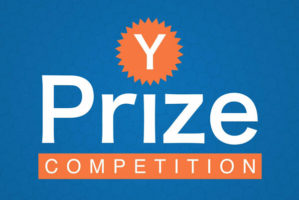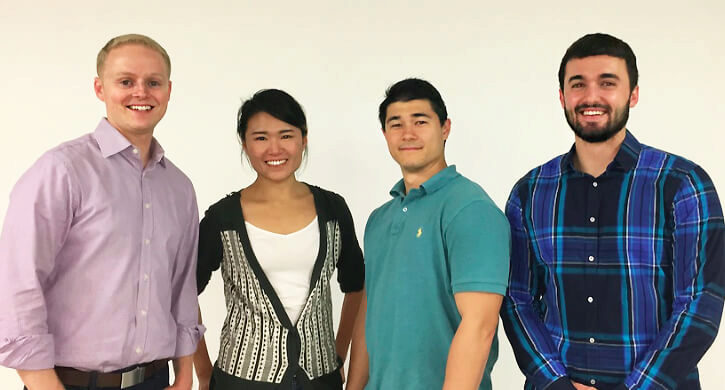 The Y-Prize Competition draws students across the University of Pennsylvania to the intersection of engineering and business, challenging them to devise new applications for emerging Penn technologies. The fifth annual competition has focused on two novel nanomaterials developed by Penn researchers, Smart Windows and Ultrathin Plates.
The Y-Prize Competition draws students across the University of Pennsylvania to the intersection of engineering and business, challenging them to devise new applications for emerging Penn technologies. The fifth annual competition has focused on two novel nanomaterials developed by Penn researchers, Smart Windows and Ultrathin Plates.
Energy-saving and green applications were popular among this year’s proposals, with the 2016-2017 Y-Prize finalists proposing ideas that would improve greenhouses, expedite heat removal in electronics, block sun from car windows, and even defend against glaucoma.
We are thrilled to announce this year’s finalists:
Greenhouse

Tai Bendit W’17, Cherag Bhagwagar GEng’17, Ben Joseph WG’17, Ruiyuan Ma GR’18, and Sumit Shrestha WG’18
Team Greenhouse‘s product idea is a smart greenhouse that maintains optimal amount of light and temperature at all times for maximum yield of the crops. This is achieved through complex shading and light control, which can be facilitated with smart glass plastic sheets used in frames that line the greenhouse. The sheets can be manually or automatically stretched by a simple mechanism to reduce or increase the opacity of greenhouse. This system would be a low-cost, standalone, and easy-to-install solution that allows for superior thermal management in today’s greenhouses.
Nanosink

Pavel Gurevich WG’18, Tian Pei WG’18, returning Y-Prize winner Alexander David GEng’17, and Zakary Beach GR’21
NanoSink applies Penn’s proprietary ultrathin plates to expedite heat removal in electronics, a problem which constitutes $5.5bn of the $10.7bn thermal management market. The accumulation of excess heat is the cause of 55% of all electronic failures and a barricade to the advancement of processing power. Unlike today’s heat sinks that employ various metals, NanoSink can leverage the nanoscale properties and structural robustness of ultrathin plates in order to pioneer new methods of heat removal, such as the use of graphene – the ultimate heat conducting material. Efficient thermal management will satiate the power requirements of ever-developing electronic technologies.
Smart Car Window

Ricky Nameshida WG’18, Jiawei Wang GEng’17, Mohamed Ghori GEng’17, and Masato Yoshimoto WG’18
Smart Car Window is an innovative sun shade device that can be equipped to door windows of cars. The product changes its transparency through elongating and contracting a smart window attached inside of two glasses, realizing an optimal light blocking effect. It not only enables drivers and passengers to avoid sun burns and protect privacy, but also enhances energy efficiency by cooling an inside temperature. We expect the current trend of eco-efficient cars will stimulate product needs from leading car manufacturing companies.
VisiPlate

Brandon Kao EAS’18, Rui Jing Jiang W’18, and Adarsh Battu W’18
VisiPlate is a nano-scale defense against open angle glaucoma, a condition that can lead to blindness. Open angle glaucoma currently affects 2.8 million people in the U.S. and incurs societal costs of $1.5 billion per year. By 2020, 3.4 million people in the U.S. will suffer from this condition and seek intervention. VisiPlate is an implant that reduces intraocular pressure by draining aqueous fluid from the eye. Thinner, stronger, and more reliable than existing lines of defense, VisiPlate consists of a curved, ultrathin, nanoplate attached to a tube. VisiPlate prevents glaucoma-induced blindness in a long-term, cost-effective way.
What’s Next
These teams are being paired up with tech consultants to continue refining their ideas over the next two months. They will pitch their proposed applications live to a panel of judges at the Singh Center for Nanotechnology in the Y-Prize Finale on January 23, 2017 for a grand prize of $10,000.
We offer sincere congratulations to all entrants for their creativity and hard work!



